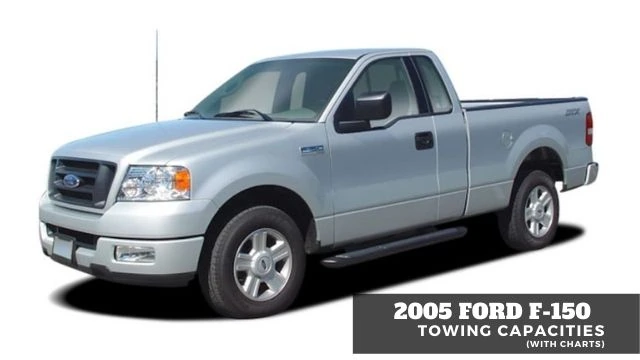The 2005 Ford F150 did not have the towing capacity that some of the later model year trucks had, but they were still able to achieve a respectable 9,900 pound rating for some models. That is quite impressive considering these were early model year vehicles and were only half ton trucks.
Don't get too excited yet though, as the lowest ratings in the charts were listed at a mere 2,200 pounds, so you will need to have the proper equipment, along with the optional trailer package that was available in order to achieve some of the highest ratings in the charts.
I go into all of the details in this article and explain everything in detail. Let's dive in!
Your owner's manual is probably the most valuable resource that you will have for your truck and I recommend that you read through it to familiarize yourself with your vehicle and that you abide by all of Ford's recommendations and requirements.
2005 F-150 Overview
Overall Capacity: The overall towing capacity for the 2005 Ford F-150 ranged between 2,200-9,900 lbs. and many different variable affected the trailer weight ratings. Two factors that had the biggest impact on the ratings were the engine that you had equipped and whether your truck was a two-wheel drive or four-wheel drive model.
Capacity By Trim Levels: I also wanted to break down the capacity ranges by the trim levels that were available for these trucks because I know a lot of you out there search your specific trim level when researching your tow capacity rating.
The data is very interesting and I was able to organize it this way according to what engine options were available for these trucks, using the image below for some of the research.
- XL: 2,200-9,900 lbs.
- STX: 2,200-7,100 lbs.
- XLT: 2,200-9,900 lbs.
- FX4: 6,900-9,900 lbs.
- Lariat: 6,900-9,900 lbs.
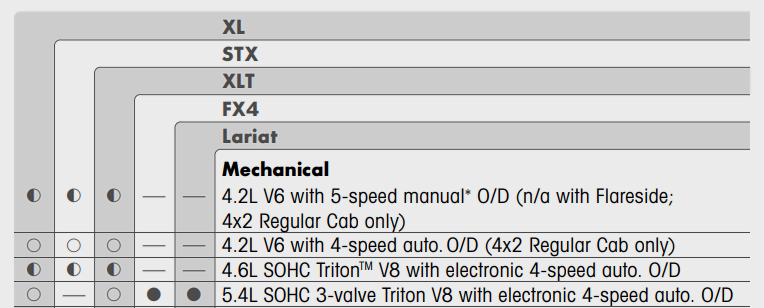
◐ Select Availability ● Standard ○ Optional — Not Available
By Engine Options: I mentioned a couple of times in this article that there were three different engine options available, so I decided to break down the data according to those different engine options. The 4.2 L engine was definitely the weakest option out of the three, and that low 2,200 lb capacity rating was reserved for the manual transmission models.
The 4.6 L and 5.4 L engines had similar specs when we look at the low-end range, as there was only a 900 pound difference between the two, but when we get into the upper range, we can see a very different scenario with a difference of 1,800 pounds.
- 4.2L: 2,200-5,600 lbs.
- 4.6L: 6,000-7,100 lbs.
- 5.4L: 6,900-9,900 lbs.
Conventional and 5th Wheel Specs: As an added bonus, I wanted to compare conventional hitches with the fifth wheel hitch specs and after doing the research and organizing the information, the two different hitches were actually quite close when it came to overall capacity ratings.
If we look at the data below for the conventional hitches, we can see that lower 2,200 lb rating that was exclusively for manual transmission models, but if we take those models out of the equation, we get a much closer overall range between the two different types of hitches.
- Conventional: 2,200-9,900 lbs.
- 5th Wheel: 5,000-9,900 lbs.
The Two Different Tow Charts:
There were two different charts for the 2005 Ford F-150s and this was only because of the two different ratings that were listed depending on the hitch that you were using. The top chart is for conventional hitches, which most people will likely use and then the chart below that is for fifth wheel hitches and the metrics are a little bit different for each style of hitch.
If we look at the data in the charts, we can see that there are a few different variables that we need to plug into the chart in order to obtain an accurate trailer weight rating. Some of these variables include the engine that you had equipped in your truck, whether you had an automatic or manual transmission model, what cab style your truck was equipped with and a couple of other variables that we will go over in this article.
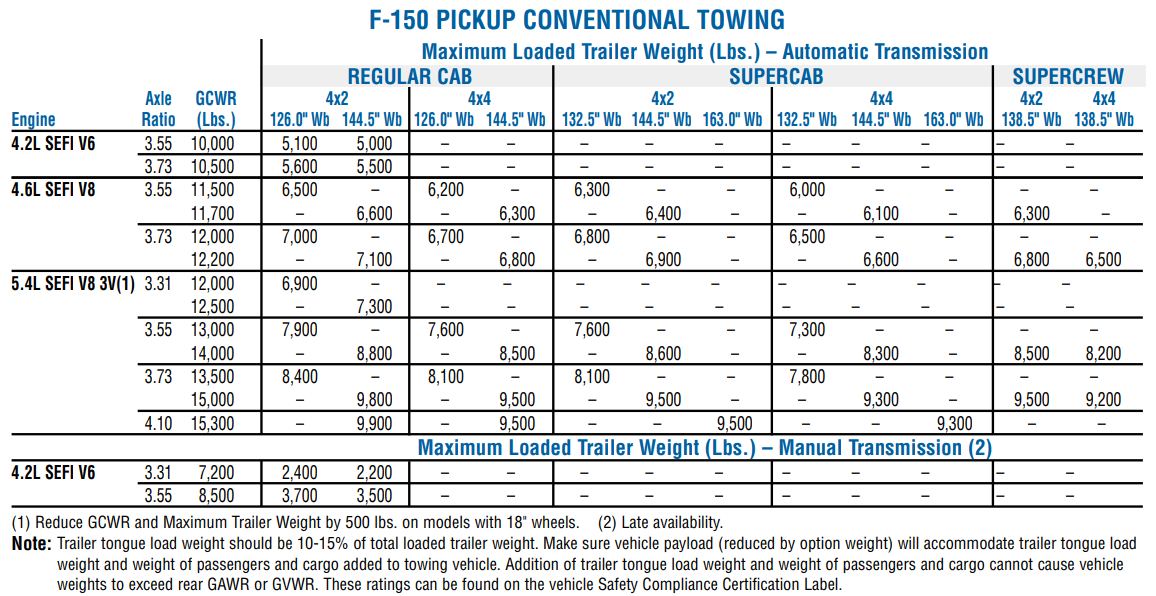
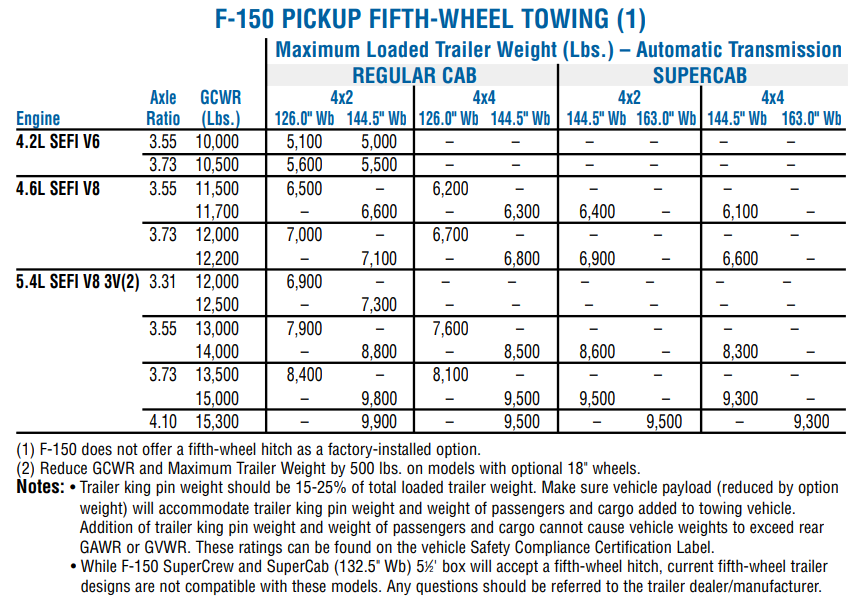

Trailer Tow Packages That Were Available For These Trucks:
I was browsing through some of the resources that I use for the research in this article and came across a table that shows the different Ford vehicles that were made in 2005 and it shows the available trailer towing packages that were offered for every single vehicle, but I outlined the two columns that we are interested in.
If we look at the table, we can see that one column was reserved for the standard equipment that came equipped with these trucks and then the other column was reserved for the optional 535 package, that was available for all of the trim levels. You do get a few extra accessories, along with some upgraded components if you have one of these optional packages installed on your truck.
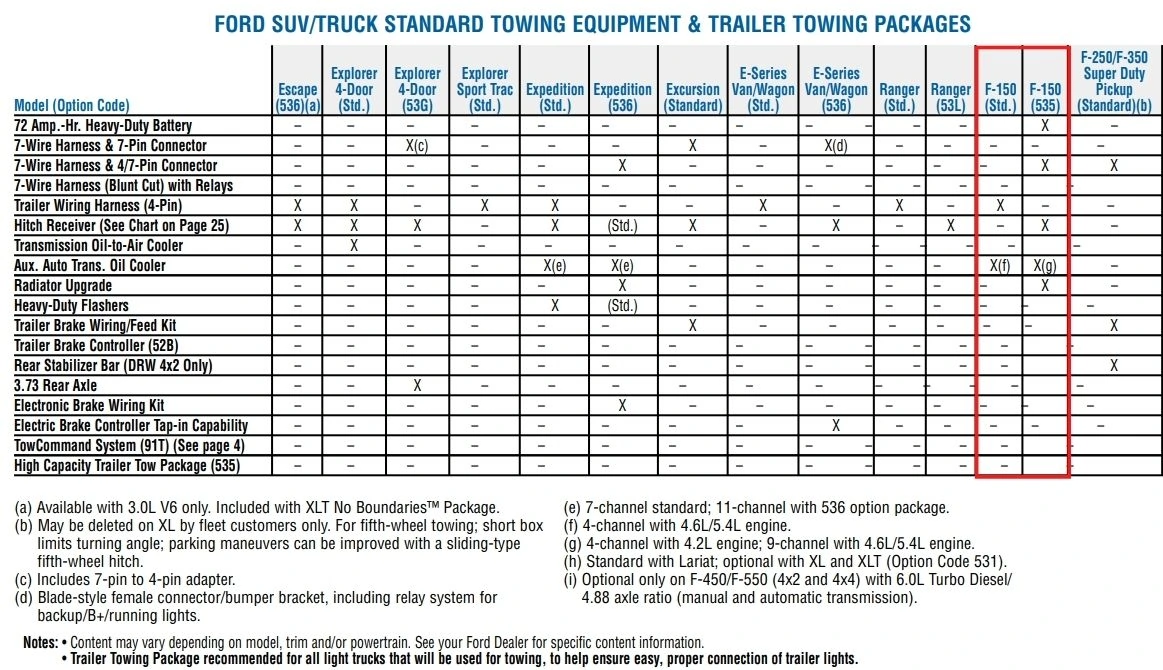

◐ Select Availability ● Standard ○ Optional — Not Available
Hitch Capacities: Another helpful resource that I found that most people don't even realize is the hitch weight capacities that are listed for the two different hitches, which in this case is a standard weight-carrying hitch and then a weight distributing hitch. This has nothing to do with a 5th wheel hitch.
If you have a standard weight carrying hitch that is not using a weight distributing type of hitch setup, then your maximum trailer weight ratings will be substantially less than some of the higher numbers that we saw in the charts.
If we look at the table below, we can see that for these model-year trucks the maximum trailer weight capacity was listed at 5,000 pounds, if you had a weight carrying hitch. In order to achieve those higher ratings, you had to have a weight distributing hitch installed, as specified by Ford.
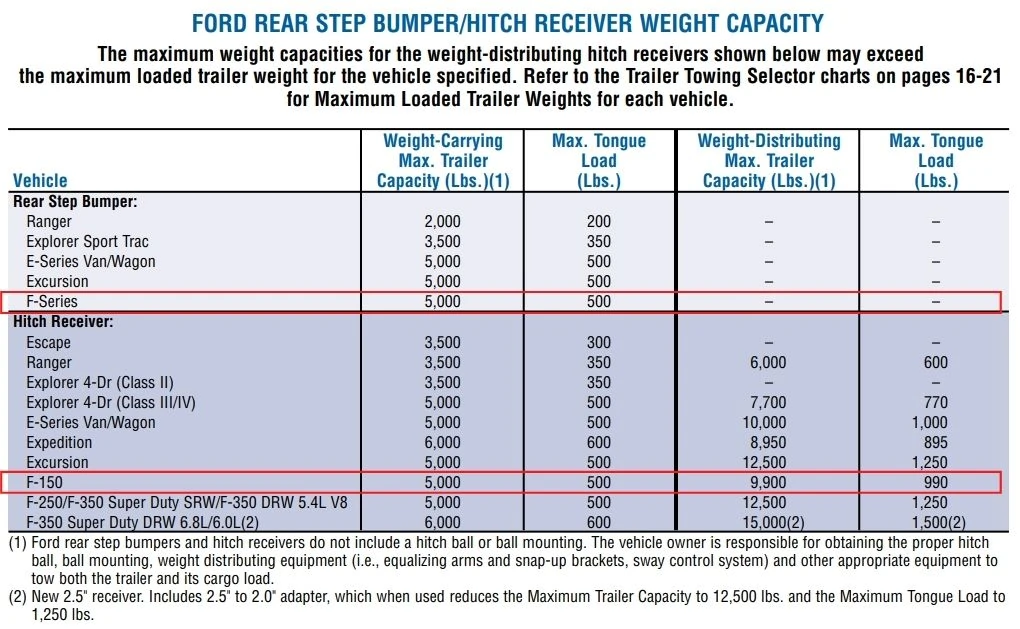
Trailer Brakes: There was not much information on trailer brakes regarding these model-year trucks, all I found was the small little note in the owner's manual that basically talks about how the trailer brakes must comply with local and federal regulations and that's about it.
If we look at the trailer package chart that is shown a bit earlier in this article, we can see that a brake controller tap is not an option for these trucks, even with the optional trailer package that was available. So if you are planning on using trailer brakes and towing heavier loads, then you will have to have a brake controller installed in your truck, using an aftermarket brake controller.

Cab Styles & Wheelbase Length: The first image illustrates a visual of what the different cab styles look like, which you will also have to plug into the charts to get your truck's specific trailer weight rating. The wheelbase length is just a measurement from the front wheels to the rear wheels, as shown in the second image below.

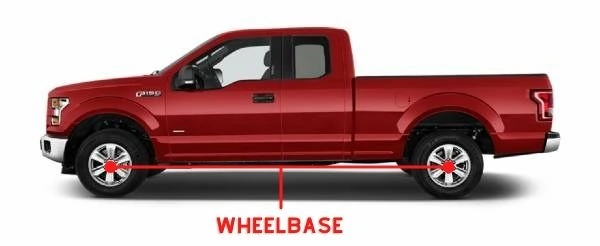
The Certification Label...
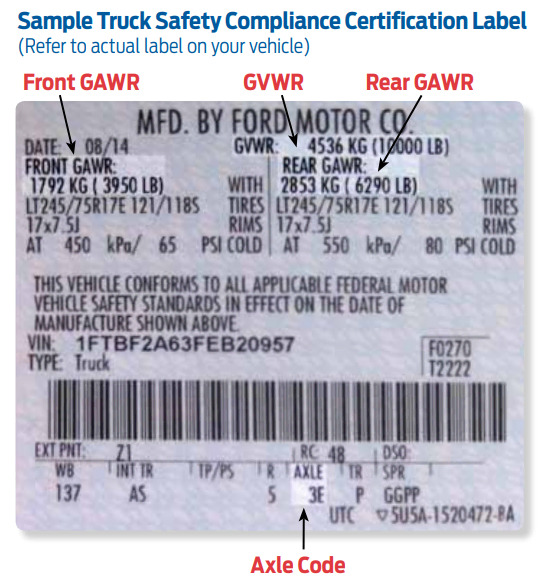
GVWR & GAWRs: The gross combined weight rating metrics were provided in the charts, which made it really convenient to look those specifications up, but the same was not true for the gross vehicle weight rating specs or the gross axle weight rating specs.
These are not found in any of the literature I used when researching this article and are instead found on the truck itself, on the driver side door pillar or the door itself. This label will look like the label that is shown in the image above and if you look towards the top of the label, this is where you will find those two specifications listed. The weight ratings will be listed in both pounds and kilograms.
GCWR: I already mentioned that the gross combined weight ratings were listed in the charts, but if we look at the data a little bit closer, we can see that the gross combined weight rating metrics ranged for these model year trucks from 7,200-15,300 pounds.
Axle Code: You will need to know the axle ratio that you have equipped on the rear axle of your truck in order to get an accurate trailer weight rating from the charts. On the certification label, you have an axle code that is listed towards the bottom of the label, which I outlined in the image above. This will be a two-digit code and you will have to decipher this code in order to figure out what axle ratio you have equipped.
Ford did not give us a legend to use for these axle codes, so you will have to use another website, like this one, in order to decipher the code. After you decipher the code, you will know what axle ratio your truck was equipped with. You can also climb under the truck and take a look at the axle housing itself to see if you can find a small metal tag that has the axle ratio stamped into it.
A Few Helpful Links:
Here is a list of all of the resources I used when researching this article and yes, these are the only resources that I needed because they provided all of the data for these trucks. The brochure was especially helpful when it came to the different trim levels and what options were available for each trim level and the owner's manual had just about everything you would need to know about your truck.
The real superstar was the guide because it contained most of the information I used for this article and it had nice charts and tables that really made the data a lot easier to read and is where some of the images came from for this article.
Last updated on April 27th, 2022 at 06:40 pm
